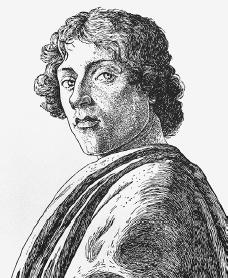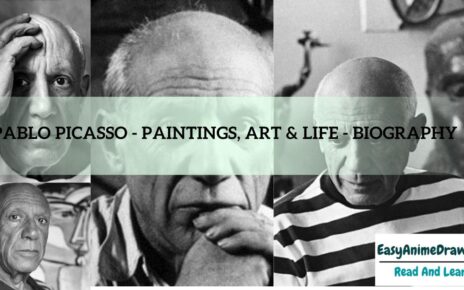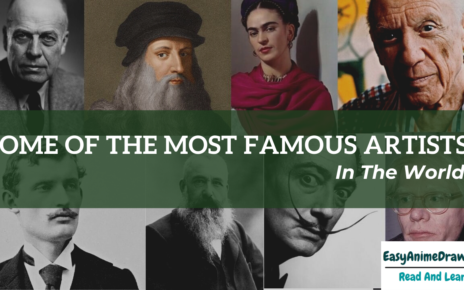Sandro Botticelli
Italian Painter
Sandro Botticelli, real name Alessandro di Mariano Filipepi, (born 1445, Florence [Italy] – died May 17, 1510, Florence), one of the great painters of the Florentine Renaissance. His hymns, The Birth of Venus and Primavera, are often portrayed by modern Renaissance viewers.

TOP QUESTIONS
- Why is Sandro Botticelli so famous?
- How was Sandro Botticelli’s family?
- How was Sandro Botticelli trained?
- How did Sandro Botticelli die?
Early Life and Work
Botticelli’s name comes from his older brother Giovanni, a pawnbroker dealer named Botticelli (“Little Barrel”). As is often the case with Renaissance artists, much of the current information about Botticelli’s life and character comes from Giorgio Vasari’s Life of the Greatest Artists, Artists, & Architects, as added and edited from the documents. Botticelli’s father was a tanner who trained Sandro as a goldsmith after school. However, since Sandro loved to paint, his father put him under Filippo Lippi, one of Florentine’s most revered kings.
Lippi’s style of painting, built in the early Florentine Renaissance, was central to Botticelli’s masterpiece, and his influence is evident even in his student’s later works.
Lippi taught Botticelli the techniques of panel painting and fresco and gave him guaranteed control of line viewing. In terms of style, Botticelli obtained from Lippi a list of genres and songs, a particular consideration of cost, a sense of status, and a particular colour bias that was evident even after Botticelli had developed his solid and vibrant colour schemes.
After Lippi left Florence for Spoleto, Botticelli worked to develop a relatively soft style that he learned from his teacher. To this day, he studied the style of Antonio Pollaiuolo and Andrea del Verrocchio, the leading Florentine painters of the 1460s. Under their influence, Botticelli produced photographic rotation figures and dynamics. He also changed Lippi’s soft style into a healthy and vibrant environment, always shaped by the ideas of beauty.
In 1470, Botticelli was founded in Florence as an independent king with his workshop. She never married, focused on her art, and she lived with her family.
These changes in Bottelli’s style can be seen in the small panels of Judith (Judith’s Return) and Holofernes (Holofernes’ Discovery), both c. 1470, and in his first book, Fortitude (1470), painted in the hall of the Tribunale dell’Are Della Mercanzia, or court of merchants, in Florence. Botticelli’s art has since shown the use of ocher in areas with darker tones that give a warm brown contrast to the Lippi colour.
An already shiny and flowing line defines the forms in his paintings. There is a growing ability to elevate the character and even the mathematical state by action, shape, and facial expression.
About 1478–81, Botticelli entered his artistic maturity; all the patience in his work disappeared and was replaced by perfect art. He combined numbers, set them into melodic songs, and drew the human character with an oppressive vigour.
He would later demonstrate his incomparable skill in translating narrative texts, whether from the histories of saints or stories from Boccaccio’s Decameron or Dante’s Divine Comedy, to become an instant, concise, and articulate image.
Dedicated Drawings
Botticelli has worked on all of the current forms of Florentine art. He painted the altars with fresco and panel, tondi (circular drawings), pictures of small panels, and small dedicated triptychs. His altars include small straight panels like St. Sebastian (1474); small oblong panels such as the famous Adoration of the Magi (c. 1476) from the Church of Santa Maria Novella; altars of medium size, best of all, the beautiful Bardi altar (1484–85); and significant projects such as St. Barnabas Altarpiece (c. 1488) and the Coronation of the Virgin (c. 1490).
His first fresco skills are visible in St. Louis. Augustine (1480) built his church on the Ognissanti Church, in which the strong will of the saints and the vigour of displaying both intellectual and spiritual devotion.
Three of Botticelli’s most iconic paintings (completed in 1482) were part of the Sistine Chapel ornaments made by a group of Florentine and Umbrian artists who were summoned to Rome in July 1481.
Theological Themes of the paintings were chosen to reflect the pope’s supremacy over the church; The Botticelli are notable for their clever combination of symbolic sequences into composite songs.
Florentine tondi used to be large paintings with rich frames, and Botticelli produced such masterpieces, beginning with the Adoration of the Kings (c. 1473; also Praising Scholars; in the National Gallery of Art in London), that he painted -Antonio Pucci.
Before Botticelli, Tondi had been conceived as oblong scenes, but Botticelli pressed all the details into detail and was able to adapt his figures to a circular form.
His complete ingenuity in tondo format is reflected in his two excellent paintings, Madonna of the Magnificat (1482) and Madonna of Pomegranate (c. 1487).
Botticelli also painted a few oblong little Madonna, most notably the Madonna of the Book (c. 1480), but left much to be desired by the Madonnas painting and other devotional works at his workshop which produced them in large quantities.
In her art, the Virgin Mary has always been a tall image, a queen dressed in a plain red dress and blue jacket, but enriched in her autograph works with sensibly translated accessories. He tends to have the inner thinking of speaking and the same inner attitude conveyed by the Botticelli saints.
Country Administration and Jobs
Botticelli is the first European artist to paint his portraits of world heavy art with a certain amount and equal or higher value in his religious paintings. However, his livelihood is lost; since the performance of about 40 years, only eight of his models still exist in the already built version, the image.
One of these, the image of the young man carrying the Cosimo de ‘Medici medal (c. 1474), is significant because Botticelli copied the newly invented tool of the Flemish artist Hans Memling to set the figure before the world appeared on the surface. This is the first example of the influence of Botticelli in modern Flemish art, which is evident in the number of his country settings.
Perhaps it was Botticelli’s photography skills that earned him the support of the Medici family, especially Lorenzo de ’Medici and his brother Giuliano, who then ruled Florence.
Botticelli painted Giuliano’s portrait and background images of his grandfather Cosimo and father Piero. Photographs of all four Medici appear as Three Wise Men and an Adoration of the Magi worker from Santa Maria Novella.
Botticelli is also known as the (1475) Giuliano Pallas banner for love and Cupid tied to an olive tree. This work, though lost, is as essential as Bottelli’s use of the ancient myth to express feelings of medieval court love in his great mythological paintings.
After the assassination of Giuliano de ’Medici on the wall of the Palazzo Vecchio, it was Botticelli who painted the Palazzo Vecchio conspiracy. Frescoes were destroyed after the Medici expulsion in 1494.
Lorenzo always loved Botticelli, as Vasari said, but even more important in the artist’s work was the enduring friendship and support of Lorenzo di Pierfrancesco de ‘Medici, the head of the small Medici since 1494 the open opposition of the top line.
Tommaso Soderini, who obtained Botticelli in 1470 from the Fortitude commission, along with Antonio Pucci, painted his first painting while still alive; both were prominent Medicean supporters, as was Giovanni Tornabuoni. He about 1486-87 gave -Botticelli is the most critical work in the world. Frescoes.
Myth Paintings
Many of the commissions given to Botticelli by these wealthy patrons were connected with Florentine culture at the time of the wedding, which was the most critical family ceremony.
Usually, the newlyweds’ wedding room was arranged in the palace of the bridegroom’s family, with drawings in it. The themes of such paintings were romantic, romantic, or exemplary, depicting heroines of fame. The first known work of Botticelli of this type was given to Lorenzo de’Medici by the marriage of Antonio Pucci’s son Giannozzo in 1483.
A four-part series — The Story of Nastagio Degli Onesti — tells a story from Boccaccio. Mythology was used in ancient Renaissance art, but the intricate tradition of the late Medicean Florence, which simultaneously incorporated the romantic feelings of court love and classical personalities and their extinct artistic traditions, utilized these mythological figures. Thoroughly and efficiently antiquarian.
The new language of mythology became modern, inspired in part by the Classical literature and illustrations and descriptions of lost ancient paintings and in part the Renaissance search for the complete physical fulfilment of a worthy person.
Among the great examples of this fashion novel in the world, painting is four of Bottelli’s famous books: Primavera (c. 1477–82), Pallas and the Centaur (C.1485), Venus and Mars (1485), and The Birth. of Venus (1485).
Primavera, or Allegory of Spring, and the Birth of Venus were painted in the home of Lorenzo di Pierfrancesco de ‘Medici. Four of these panel drawings have been translated differently by modern studies.
Statistics certainly do not constitute a well-known myth but are used figuratively to illustrate various aspects of love: in Primavera, its maturity and its success in marriage; in Pallas, the subjugation of masculinity by feminism; at Venus and Mars, a celebration of the woman’s triumphant victory over man’s sexual exhaustion; and The Birth of Venus, the birth of love on earth. Primavera and The Birth of Venus contain some attractive nude and semi-nudes painted during the Renaissance.
The four layouts of the paintings, which are part of the myth — that of Primavera is the Hesperides field — are partly symbolic, pastoral, and unusual.
Botticelli’s drawings from a room in Villa Lemmi, celebrating the marriage of Lorenzo Tornabuoni and Giovanna degli Albizzi in 1486, also draw attention to ancient Mythology with their theme.
In these sculptures, real people encounter mythological figures: Venus, visited by his Graces, presents Giovanna degli Albizzi with flowers, while Lorenzo Tornabuoni, called for a life of trade, is brought before Prudentia and the Art of Freedom.
The impact of Renaissance humanist artistic theory Leon Battista Alberti is reflected in Botticelli Classical’s borrowing and careful use of the line view.
A work that clearly illustrates Botticelli’s interest in reviving ancient antiquities is The Calumny of Apelles (c. 1495), an article commended by Alberti, who based his description on the work of the ancient Greek painter Apelles. Botticelli also found inspiration in Classical art directly.
While in Rome in 1481-82, for example, he reconstructed the Constantine Arch of that city in one of his Sistine paintings. Three statues in Primavera are taken from a Classical painting of the Three Graces, and the statue of Venus in The Birth of Venus is based on an ancient statue of Venus Pudica.
Late Works
Incipient mannerism is evident in Botticelli’s recent works of the 1480s and in works such as the magnificent Cestello Annunciation (1490) and the small Pietà (late 1490s) now in the Poldi-Pezzoli Museum.
After the 1490s, his style changed dramatically; the drawings were relatively small. The figures in them are now so thin that the artist focuses attention on their fascinating urgency of action by highlighting their gestures and expressions.
This mysterious deviation from the natural thinking of the 1480s was probably due to Botticelli’s involvement with the fiery reformer Girolamo Savonarola in the 1490s. The years from 1494 were remarkable in Florence: its Mediciary rulers fell, and the republican government was placed under the rule of Savonarola. Savonarola was a self-absorbed man who took a stand against the church’s corruption and prophesied its future revival.
According to Vasari, Botticelli was a devout follower of Savonarola, even after the assassination in 1498. The spiritual discrepancy of these years is reflected in two religious paintings, the apocalyptic Mystic Crucifixion (1497) and the Mystic Nativity (1501), which express Botticelli’s faith in the revival of the church. The Tragedy of Lucretia (c. 1499) and The Story of Virginia Romana (1499) seem to criticize Medici’s dictatorship and the celebration of republicanism.
Botticelli, according to Vasari, had a keen interest in researching and interpreting Dante’s Divine Comedy.
He made some designs to represent the first printed edition of 1481 and worked from time to time during the following years of the unfinished set of large drawings corresponding to each canto and the complete visual cues.
He was also much needed by the sculptors, embroiders, and embroideries as a designer; among his few surviving paintings is one that might be associated with these techniques.
Although Vasari describes Botticelli as poor and disabled in his later years, other evidence suggests that he and his family remained wealthy.
He received commissions in the mid-1490s and was still paying his dues when, later, at the Saint Luke Company, the Florentine painters’ association, in 1505. perhaps he was suffering from an illness. At his death in 1510, he was buried in the Ognissanti Church.
About 50 paintings still exist from the whole or part of his hand. A beautiful collection of his works from the Uffizi Gallery includes his many works of art.






buy semaglutide 14 mg online – buy rybelsus periactin 4 mg pill